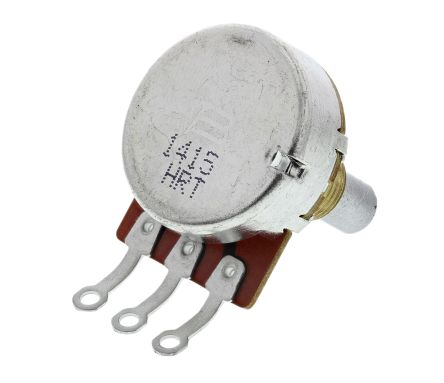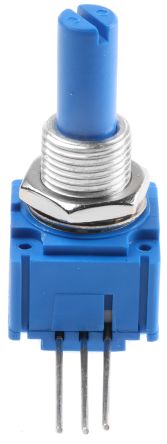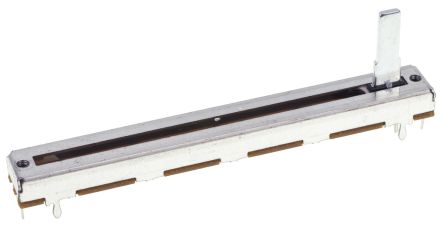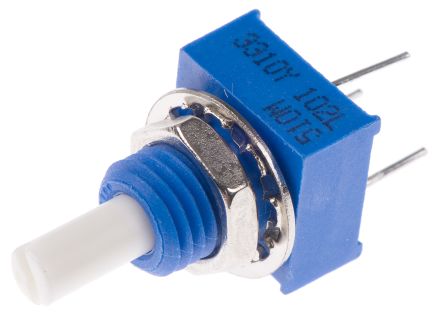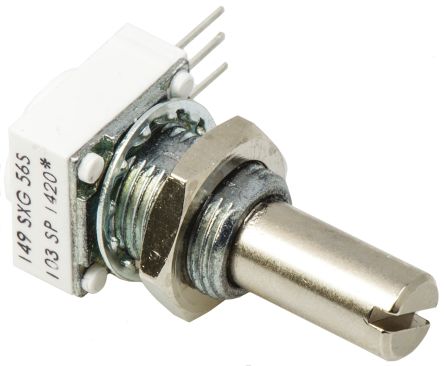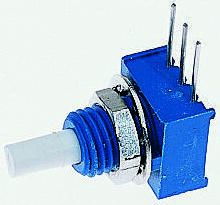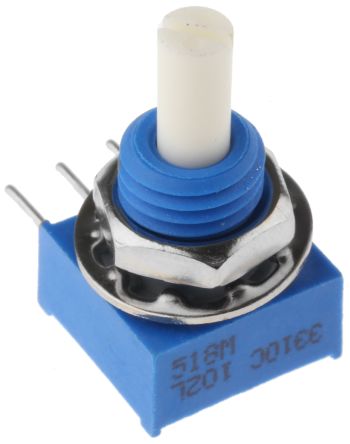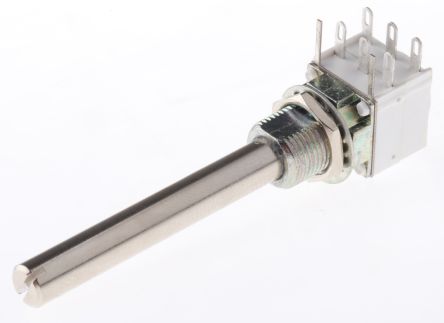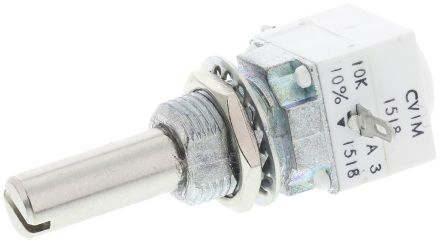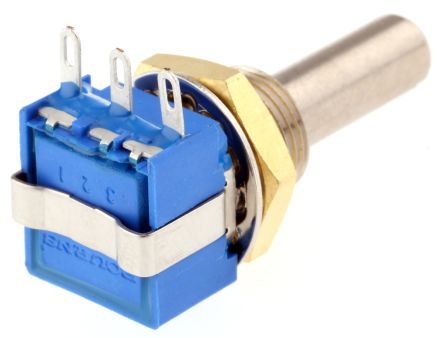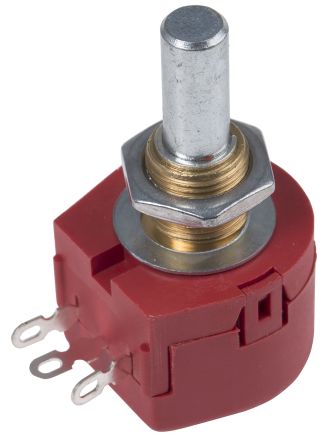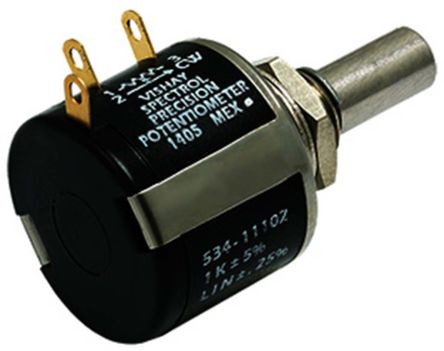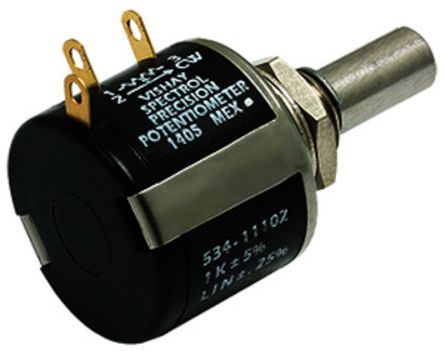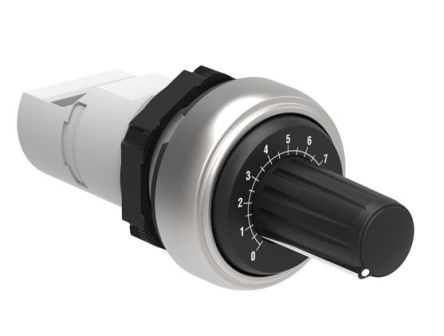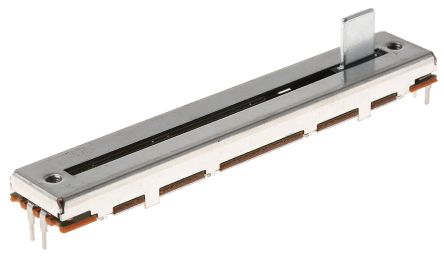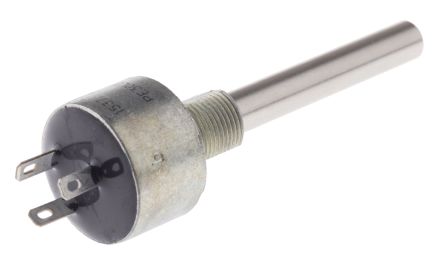- Automation & Control Gear
- Cables & Wires
- Enclosures & Server Racks
- Fuses & Circuit Breakers
- HVAC, Fans & Thermal Management
- Lighting
- Relays & Signal Conditioning
- Switches
- Batteries & Chargers
- Connectors
- Displays & Optoelectronics
- ESD Control, Cleanroom & PCB Prototyping
- Passive Components
- Power Supplies & Transformers
- Raspberry Pi, Arduino, ROCK, STEM Education & Development Tools
- Semiconductors
Potentiometers
A potentiometer is a manually adjustable, variable resistor with three terminals. Potentiometers enable you to regulate and change the current flowing through a circuit. Potentiometers can also be called pots or potmeters.
Potentiometers have two terminals that are fixed to a resistive element (the track). The resistive element is typically wire wound or made from carbon, cermet or conductive plastic. The third terminal is connected to an adjustable wiper, which is a sliding contact. As the wiper moves along the track, similar to the way a string might be adjusted along an instrument, the resistance changes and the current flowing through the circuit changes.
Types of Potentiometers
Potentiometers, designed for precise control and variability in applications, come in various forms, such as:
Rotary Potentiometers
The most common type of potentiometer, rotary potentiometers, feature a wiper that moves in a circular path and includes several subtypes:
- Single-Turn: Rotates approximately 270 degrees, widely used for simple control tasks where fine adjustment is less critical.
- Multi-Turn: Offers multiple rotations for increased precision, ideal in settings requiring detailed adjustments over several cycles.
- Dual-Gang: Contains two potentiometers on the same shaft, allowing simultaneous adjustments, commonly used in stereo audio applications for balanced control.
- Concentric: Features two separate rotary potentiometers with concentric knobs, enabling independent control of two settings from the same location, often found in older car radios.
- Servo: Integrates a motor to adjust the potentiometer automatically, useful in applications like remote-controlled audio systems where adjustments need to be made from a distance.
Linear Potentiometers
Known for their slider, slide pot, or fader functionality, these potentiometers have a wiper that moves along a linear path:
- Slide: Typically used in audio mixing consoles as faders to adjust levels of sound channels smoothly.
- Dual-Slide: Controls two separate potentiometers with a single slider, ideal for managing stereo audio signals.
- Multi-Turn: Features a spindle that actuates a linear wiper over multiple rotations, enhancing precision in industrial applications.
- Motorised: A motor drives the fader position automatically, commonly used in automated audio consoles for saved scene recalls.
Digital Potentiometers
Digital potentiometers, controlled electronically, consist of a series of resistive elements each with a switch acting as a virtual wiper position. These devices can be adjusted using signals or digital communication protocols like I²C and SPI, providing precise control over resistance settings in electronic circuits.
Membrane Potentiometers
Membrane potentiometers are a type of variable resistor potentiometer that uses a conductive membrane, deformed by a sliding element, to contact a resistor voltage divider. They are known for their high repeat accuracy and long service life, making them suitable for position sensing in various applications such as in touch-screen devices.
Rheostats
A potentiometer can also function as a rheostat, offering a single variable resistance when the wiper and one terminal are connected. This setup is ideal to avoid potential issues with infinite resistance if the wiper loses contact, ensuring more reliable and stable performance.
Industrial Applications of Potentiometers
Potentiometers play a crucial role in various industrial settings:
- Discrete Manufacturing: Rotary and multi-turn potentiometers are commonly used for precise control in automated machinery and robotic systems.
- Process Manufacturing: Linear and motorised potentiometers adjust parameters in continuous production lines, ensuring product consistency.
- Energy & Utilities: Robust digital and multi-turn potentiometers monitor and control operations in power generation and distribution systems.
- Facilities Intralogistics: Slide and servo potentiometers enhance accuracy and automation in systems like conveyor belts and sorting mechanisms.
Do I Need a Potentiometer with a Linear or Logarithmic Taper?
The taper you need for your potentiometer depends on the intended application and the specific characteristics of the sensor involved, if any.
For potentiometers with a linear taper, the resistance between one end of the track and the wiper varies at a constant rate. If you turn the potentiometer halfway or slide the fader halfway along the track, the resistance will be half of the total resistance. Linear taper potentiometers are typically used in applications such as light dimmer switches.
For logarithmic taper potentiometers, the resistance does not vary at a constant rate. The level of resistance moves exponentially up or down. A potentiometer that has been turned or moved halfway along its track will not produce resistance that is half the total resistance. Logarithmic potentiometers are commonly used for audio applications.
Looking for Peripherals for Your Potentiometer?
Explore our extensive range of potentiometer peripherals designed to enhance functionality and performance in any application. Click on the links below:
Trusted Supplier of Quality Potentiometers
RS is a globally recognised supplier and distributor of rotary variable resistors featuring renowned brands such as Bourns, TE Connectivity, Vishay, and our own RS PRO. We offer competitive prices and a wide selection to meet all your needs for precision control.
For more details on our ordering process, delivery services and delivery fees, please refer to our Delivery Page.
